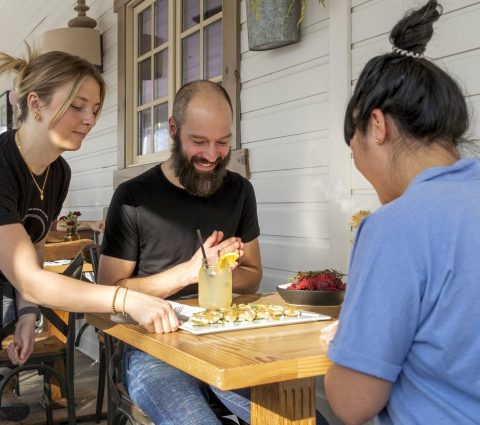- Things To Do
- Events
- Food & Drink
-
Places To Go
- Winnipeg
- Churchill
- Eastern Region
- Central Region
- Interlake Region
- Parkland Region
- Western Region
- Manitoba North
- Must-See Destinations
-
Itineraries
- Island Getaway on the Prairies
- Wheat City Wanderings in Brandon
- Escape to the water and the wild
- St. Boniface Winter: Passion and History
- Follow the path to a story in Neepawa
- Unleash your inner Viking this winter
- Explore Clear Lake this winter like never before
- Breathe in the Whiteshell this winter
- Go North for a boreal forest escape
- Treaty Areas
- Where To Stay
- Trip Essentials
- #ExploreMB Blog
Navigation Options
- FREN
- Things To Do
- Events
- Food & Drink
-
Places To Go
- Winnipeg
- Churchill
- Eastern Region
- Central Region
- Interlake Region
- Parkland Region
- Western Region
- Manitoba North
- Must-See Destinations
-
Itineraries
- Island Getaway on the Prairies
- Wheat City Wanderings in Brandon
- Escape to the water and the wild
- St. Boniface Winter: Passion and History
- Follow the path to a story in Neepawa
- Unleash your inner Viking this winter
- Explore Clear Lake this winter like never before
- Breathe in the Whiteshell this winter
- Go North for a boreal forest escape
- Treaty Areas
- Where To Stay
- Trip Essentials
- #ExploreMB Blog

Menno-toba: Top spots in Manitoba to make like a Mennonite
Posted March 31, 2016 | Author Travel Media Relations
Some people work harder than others at finding peace and quiet. Take the Mennonites, for example. Evolving out of the 16th century Reformation, they were persecuted for their pacifist beliefs for 400 years. With stops in Germany, the Netherlands, Poland and Russia, the Mennonites dreamed of a home that would give peace a chance.
Finally, Manitoba beckoned with its vast prairies and a need for settlers. Given their desire for simple communal living off the land, the Mennonites thrived as prairie homesteaders, particularly in our province’s southern reaches.
Mennonite Heritage Village

Your first stop for a crash course in Mennonite history is Steinbach, a 65 km drive southeast of Winnipeg. The Mennonite Heritage Village includes a blacksmith shop, print shop, church, school and several homes that give you a glimpse of daily life for 16th century Russian Mennonites. Hint: it wasn’t easy. You’ll also find exhibits of arts and crafts and farm equipment, including a fire engine and tractors. The museum’s impressive windmill is the only operational one in Canada. It was erected in 2001 after an arsonist destroyed the museum’s first windmill built in 1972. Pioneer Days – held every August long weekend at MHV – is a highlight of the summer for many Steinbach Mennonite families.
And while you’re here, don’t forget your Mennonite munchies. Stop at the museum’s Livery Barn for some authentic vereniki (cottage cheese perogies) and plautz (a fruit cake dessert).
Wall of Remembrance

Located in Bethel Heritage Park in Winkler (132 kms southwest of Winnipeg), this monument honours Manitoba’s conscientious objectors (COs) during the Second World War. The wall is composed of 3,021 bricks, one for each Manitoban CO who refused military duty based on religious beliefs. About 75 per cent of these COs were Mennonite, who alternatively served community service in places such as national parks, hospitals and lumber camps. The Wall of Remembrance is located across the park from the war memorial, which some interpret to be symbolic. The choice to refuse military service was a divisive one, creating rifts in communities and families. Even seven decades later, the wall’s organizers have received letters of protest.
Ten Thousand Villages

The Mennonites believed in fair trade way before it was cool. In 1946, a Mennonite Central Committee missionary named Edna Ruth Byler bought several pieces of embroidery from Puerto Rican women. She brought it home, sold it, and used the profits to buy more. Her ideals of fair commerce through ethical partnerships have ballooned into Ten Thousand Villages, a chain of almost 50 stores across Canada. The non-profit retailer now sells fair-trade handicrafts, ranging from Andean worry dolls to Nepalese carpets, created by more than 100 artisan groups in 35 developing countries. Get your shop on in Winnipeg, or you’ll also find stores in Steinbach, Winkler, Altona and Brandon.
Neubergthal

Just outside Altona (117 kms south of Winnipeg), this Mennonite street village was settled in the late 19th century and showcases the typical Mennonite homestead, the signature feature being living quarters that were attached to the barn. In many cases, people lived in the same building as the animals with only a wall separating them. Each family’s buildings followed the same formation, creating a visually clean, humble community that aspired to interdependent living.Third and fourth generations of Klippensteins, Hamms, Hoeppners and Funks who originally settled the village remain in Neubergthal. They offer tours of their community and homes.

About The Author
This story was originally commissioned by Travel Manitoba Media Relations.
